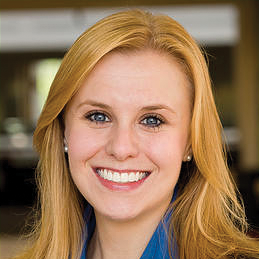With Republican and Democratic contenders seeking their respective parties’ 2016 presidential nominations, it’s no surprise to see a variety of economic issues in the headlines. In every national election it’s the same story: the minimum wage, unemployment, health care, and other issues are trotted out in front of candidates, and each explains how he or she will fix all these problems and the universe as a whole.
One issue that tends to come up every election cycle is the supposed problem of income inequality. Although the presidential primary and caucus season is still months away, candidates are already talking about inequality. For example, Democratic contender Bernie Sanders says, “The gap between the very rich and everyone else in America is wider today than at any time since the 1920s.” On the other side of the political aisle, Republican hopeful Sen. Ted Cruz makes a similar claim.
The numbers regarding income inequality in America are certainly noteworthy. Between 1967 and 2014 the total share of income in the top quintile, or 20 percent of income earners, rose from 43.6 to 51.2 percent, according to theCensus Bureau. During that same period those in the bottom quintile saw their share of total income decrease slightly from 4 to 3.1 percent.
But these figures don’t tell the whole story. They say nothing about changes in absolute income—that is, if the poor earn more today in real terms than they did in 1967. They also tell us nothing about which households are the poorest. Are the people who were poor in 1967 the same as those who are poor today? Are the people atop the economic ladder the same as 50 years ago?
The rich have certainly gotten richer. The mean income for the top 20 percent of earners increased a whopping 75 percent between 1967 and 2014 (in 2014 dollars), from around $110,000 to just over $194,000. But the poorest got richer too. Adjusting for inflation, those in the bottom quintile made about $9,900 in 1967. In 2014 they earned about $12,000.
Moreover, the people who were poor in the 1960s are not the same people who were poor in 2014. Even the poorest people in 1996 are not the same as the poorest today. More than half of all U.S. taxpayers moved into a different income quintile between 1996 and 2005. Half of those in the poorest group in 1996 moved to a higher quintile by 2005. Only a quarter of the top 1 percent in 1996 were still in that group by 2005.
What about children born into rich and poor families? Are they destined to live the same lifestyle as their parents? According to data from the Panel Study of Income Dynamics (PSID), a survey that has been collecting data since 1968, 90 percent of children born to individuals in the bottom quintile are better off than their parents. Many children born to the top 20 percent fared better as well, with about half surpassing their parents. The other half have the same or a lower standard of living.
There is still another piece to this puzzle. What consumer goods do the poorest people in America have today? To take one example: 80 percent of the poorest Americans have air conditioning. Yet in 1970 only 36 percent of the entire U.S. population could say the same. About 75 percent of the poorest Americans have a car, and 31 percent have two or more. Nearly two-thirds have cable or satellite TV, and half have a personal computer. The story is similar for a wide array of products. Being poor is not like it used to be.
This is not to downplay or dismiss the plight of the America’s poor. Without a doubt, many struggle to make ends meet. But we should be careful in claiming that the rich are wealthy only at the expense of the poor and that the gap between them is inherently problematic. While those at the top may have a lot, those at the bottom have more today than ever before. Just as important, even those at the bottom have a great chance of getting out.








